Program Accomplishments
LDRD-funded research explores the frontiers of science and technology in emerging mission spaces, with projects guided by an extremely creative, talented team of scientists and engineers.
Featured Research
LDRD funded 250 projects in fiscal year 2022. Brief summaries of each project are included in Project Highlights. Here, we provide a closer look at a handful of projects that underscore the exciting, innovative research in this year’s LDRD portfolio.
LDRD-funded research explores the frontiers of science and technology in emerging mission spaces, with projects guided by an extremely creative, talented team of scientists and engineers.
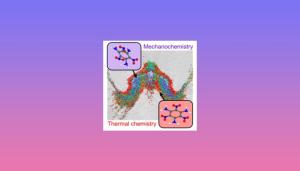
Scientists at the Lawrence Livermore National Laboratory (LLNL) Energetic Materials Center and Purdue University Materials Engineering Department used simulations performed on the LLNL supercomputer Quartz to uncover a general mechanism that accelerates chemistry in detonating explosives critical to managing the nation’s nuclear stockpile. Their research is featured in the July 15 issue of the Journal of Physical Chemistry Letters.
Insensitive high explosives based on TATB (1,3,5-triamino-2,4,6-trinitrobenzene) offer enhanced safety properties over more conventional explosives, but physical explanations for these safety characteristics are not clear. Explosive initiation is understood to arise from hotspots that are formed when a shockwave interacts with microstructural defects such as pores. Ultrafast compression of pores leads to an intense localized spike in temperature, which accelerates chemical reactions needed to initiate burning and ultimately detonation. Engineering models for insensitive high explosives — used to assess safety and performance — are based on the hotspot concept but have difficulty in describing a wide range of conditions, indicating missing physics in those models.
Using large-scale atomically resolved reactive molecular dynamics supercomputer simulations, the team aimed to directly compute how hotspots form and grow to better understand what causes them to react.
Chemical reactions generally accelerate when the temperature is increased, but there are other potential mechanisms that could influence reaction rates.
“Recent molecular dynamics simulations have shown that regions of intense plastic deformation, such as shear bands, can support faster reactions,” explained LLNL author Matthew Kroonblawd. “Similar accelerated rates also were observed in the first reactive molecular dynamics simulations of hotspots, but the reasons for the accelerated reactions in shear bands and hotspots were unclear.”
The main advantage and predictive power of molecular dynamics simulations come from their complete resolution of all the atom motions during a dynamic event.
“These simulations generate enormous quantities of data, which can make it difficult to derive general physical insights for how atom motions govern the collective material response,” said Ale Strachan of Purdue University.
To better grapple with this big data problem, the team turned to modern data analytic techniques. Through clustering analysis, the team found that two molecular state descriptors were connected to chemical reaction rates. One of these is the temperature, which is well-understood from traditional thermochemistry. The other important descriptor is a newly proposed metric for the energy associated with deformations of molecule shape, that is, the intramolecular strain energy.
The team’s clustering analysis revealed that molecules in a hotspot that are driven from their equilibrium planar shape react more quickly; mechanical deformations of molecules in regions of intense plastic material flow lead to a mechanochemical acceleration of rates.
Mechanically driven chemistry (mechanochemistry) is known to operate in many systems, ranging from precision manipulation of bonds through atomic force microscopy “tweezers” to industrial-scale ball milling.
The mechanochemistry that operates in shocked explosives is not directly triggered, but results from a complicated cascade of physical processes that start when a shock induces plastic material deformations.
The work provides clear evidence that mechanochemistry of deformed molecules is responsible for accelerating reactions in hotspots and in other regions of plastic deformation, such as shear bands.
“This work provides a quantitative link between hotspot ignition chemistry and the recent 2020 LLNL discovery of shear band ignition, which provides a firm basis for formulating more general physics-based explosive models,” Kroonblawd said. “Including mechanochemical effects in explosives models will improve their physical basis and allow for systematic improvements to assess performance and safety accurately and reliably.”
LDRD Project Title: Unlocking the Mysteries of High-Explosive Science
Principal Investigator:
Lara Leininger
LDRD Project:
18-SI-004
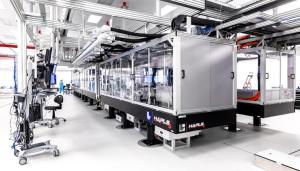
Lawrence Livermore National Laboratory (LLNL) researchers have designed a compact multi-petawatt laser that uses plasma transmission gratings to overcome the power limitations of conventional solid-state optical gratings. The design could enable construction of an ultrafast laser up to 1,000 times more powerful than existing lasers of the same size.
The new design could make it possible to field a laser system similar in size to the LLNL-designed L3 HAPLS (High-Repetition-Rate Advanced Petawatt Laser System) at ELI Beamlines in the Czech Republic, but with 100 times the peak power.
Petawatt (quadrillion-watt) lasers rely on diffraction gratings for chirped-pulse amplification (CPA), a technique for stretching, amplifying, and then compressing a high-energy laser pulse to avoid damaging optical components. CPA, which won a Nobel Prize in physics in 2018, is at the heart of the National Ignition Facility’s Advanced Radiographic Capability as well as NIF’s predecessor, the Nova Laser, the world’s first petawatt laser.
With a damage threshold several orders of magnitude higher than conventional reflection gratings, plasma gratings “allow us to deliver a lot more power for the same size grating,” said former LLNL postdoc Matthew Edwards, co-author of a Physical Review Applied paper describing the new design published online. Edwards was joined on the paper by Laser-Plasma Interactions Group Leader Pierre Michel.
“Glass focusing optics for powerful lasers must be large to avoid damage,” Edwards said. “The laser energy is spread out to keep local intensity low. Because the plasma resists optical damage better than a piece of glass, for example, we can imagine building a laser that produces hundreds or thousands of times as much power as a current system without making that system bigger.”
LLNL, with 50 years of experience in developing high-energy laser systems, also has been a longtime leader in the design and fabrication of the world’s largest diffraction gratings, such as the gold gratings used to produce 500-joule petawatt pulses on the Nova laser in the 1990s. Still larger gratings, however, would be required for next-generation multi-petawatt and exawatt (1,000-petawatt) lasers to overcome the limits on maximum fluence (energy density) imposed by conventional solid optics (see “Holographic Plasma Lenses for Ultra-High-Power Lasers”).
Edwards noted that optics made of plasma, a mixture of ions and free electrons, are “well suited to a relatively high-repetition-rate, high-average-power laser.” The new design could, for example, make it possible to field a laser system similar in size to the L3 HAPLS (High-Repetition-Rate Advanced Petawatt Laser System) at ELI Beamlines in the Czech Republic, but with 100 times the peak power.
Designed and constructed by LLNL and delivered to ELI Beamlines in 2017, HAPLS was designed to produce 30 joules of energy in a 30-femtosecond (quadrillionth of a second) pulse duration, which is equal to a petawatt, and do so at 10 Hertz (10 pulses per second).
“If you imagine trying to build HAPLS with 100 times the peak power at the same repetition rate, that is the sort of system where this would be most suitable,” said Edwards, now an assistant professor of mechanical engineering at Stanford University.
“The grating can be remade at a very high repetition rate, so we think that 10 Hertz operation is possible with this type of design. However, it would not be suitable for a high-average-power continuous-wave laser.”
“We’re aiming for a design where that kind of inhomogeneity is as small a problem as possible for the overall system —the design should be very tolerant to imperfections in the plasma that you use.”
LDRD Project Title: Ultrafast Plasma Optics for High-Power Coherent Light Sources
Principal Investigator:
Matthew Edwards
LDRD Project:
20-ERD-057
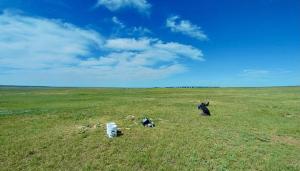
Soil is the largest terrestrial reservoir of organic carbon and is central for climate change mitigation and adaptation. Mineral-organic associations play a critical role in soil carbon preservation, but the global capacity for storage in this form has never been quantified.
New research from Lawrence Livermore National Laboratory (LLNL) and an international team of collaborators addresses this gap by producing the first spatially resolved global estimates of mineral-associated carbon and the carbon-storage capacity of soil minerals.
The research — led by LLNL Lawrence fellow Katerina Georgiou, and appearing in Nature Communications— gathered measurements from 1,144 globally-distributed soil profiles to better understand the role of climate and management on driving current mineral-associated carbon stocks and the departure of soils from their mineralogical capacity.
The study found that regions under agricultural management and deeper soil layers contain the largest undersaturation of mineral-associated carbon; the degree of undersaturation can help inform sequestration efficiency over years to decades.
The team showed that across 103 carbon accrual measurements spanning management interventions globally, soils furthest from their mineralogical capacity are more effective at accruing carbon. Sequestration rates average three times higher in soils at one tenth of their capacity compared to soils at one half of their capacity.
Soil organic carbon is an integral component of terrestrial ecosystems and plays an important role in ecosystem resilience and productivity. Over the last two centuries, human land-use and land-cover change have resulted in a significant net loss of soil carbon.
“Improved soil management practices that promote soil carbon sequestration, especially in stable carbon pools, are needed to reverse this trajectory and help mitigate climate change,” said Georgiou, lead author of the paper.
“Our findings provide insights into the world’s soils, their capacity to store carbon and priority regions and actions for soil carbon management,” she added.
LDRD Project Title: From Microbes to the Earth System – Upscaling Microbial Community Dynamics to Macro-scale Soil Carbon Models
Principal Investigator:
Katerina Georgiou
LDRD Project:
21-ERD-045
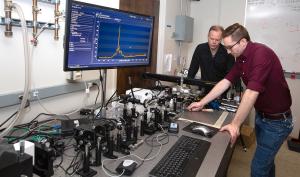
A team of researchers from Lawrence Livermore National Laboratory (LLNL) and the University of Michigan has found that the rate of cooling in reactions dramatically affects the type of uranium molecules that form.
The team’s experimental work, conducted over about a year-and-a-half starting in October 2020, attempts to help understand what uranium compounds might form in the environment after a nuclear event. It has recently been detailed in Scientific Reports, a Nature-affiliated publication.
“One of our most important findings was learning that the rate of cooling affects the behavior of uranium,” said Mark Burton, the paper’s lead author and a chemist in the Lab’s Materials Science Division. “The big picture here is that we want to understand uranium chemistry in energetic environments.”
In their experiments, the LLNL and Michigan researchers found that the rate of cooling — as well as the amount of oxygen — dramatically affect how uranium combines with oxygen.
The recent experiments showed that as uranium cools from a plasma at about 10,000 degrees Celsius in microseconds (millionths of a second), the chemistry is drastically different when compared to cooling over milliseconds (thousandths of a second).
The most recent work, performed under a Laboratory Directed Research and Development (LDRD) strategic initiative, seeks to understand the effect of the local environment on the physics and chemistry of nuclear explosions, particularly to aid computational modeling efforts.
“The electron structures of actinides, such as uranium and plutonium, are extremely complex and difficult to computationally model,” said Kim Knight, a co-author of the study and the leader of the LDRD strategic initiative.
“Experiments like this one can provide data and insight on the generalized behavior of these actinides, something that aids our computational modeling.”
Uranium and oxygen can combine to form hundreds of different molecules, depending on the oxygen concentration and the cooling rates; each of these species can have different and distinct chemical behaviors.
“When uranium comes into contact with oxygen, it will form different molecules. The rate of cooling also affects the type of molecules that form. We care about what specific molecules are formed as a result,” Burton explained.
“These experiments improve our understanding of gas-phase chemical reactions between uranium and oxygen as hot plasmas cool, which can inform models of nuclear explosions to refine our predicative capabilities of particle formation and transport,” Knight said.
“The fate of uranium in the environment is important for predicting the impact of events like nuclear weapons or nuclear accidents in different environments. One of the applications is to aid in the interpretation of events for nuclear forensics,” she added.
LDRD Project Title: Identifying the Influence of Environmental Effects on Post-Detonation Chemistry and Debris Formation
Principal Investigator:
Kimberly Knight
LDRD Project:
20-SI-006
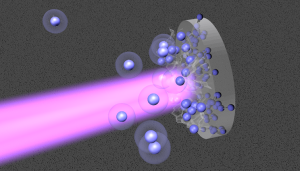
Lawrence Livermore National Laboratory (LLNL) scientists recently obtained high-precision thermodynamic data on warm dense nitrogen at extreme conditions that could lead to a better understanding of the interiors of celestial objects like white dwarfs and exoplanets.
The team, which includes researchers from the University of California, Berkeley and the University of Rochester, used an advanced technique that combines pre-compression in a diamond anvil cell and laser-driven shock compression at the Omega Laser Facility at the University of Rochester.
Molecules of nitrogen (N2) make up 78% of the air we breathe. They are unique because the two nitrogen atoms in N2 are bound with a triple covalent bond, which is the strongest of all simple diatomic molecules. Nitrogen also is an important constituent of celestial bodies in the outer solar system and beyond. For example, ammonia (NH3) storms are believed to exist in giant planets like Jupiter, while the dwarf planet Pluto, Saturn’s icy moon Titan and Neptune’s icy moon Triton have N2-rich atmospheres.
Previous studies with this powerful technique revealed experimental evidence for superionic water ice and helium rain in gas-giant planets. In the new research, the team conducted shock experiments on precompressed molecular nitrogen fluid up to 800 GPa (~8 million atmospheres) of pressure.
They observed clear signatures for the completion of molecular dissociation near 70-100 GPa and 5-10 kK (thousands of kelvins) and the onset of ionization for the outermost electrons above 400 GPa and 50 kK.
“It is very exciting that we can use shock waves to break these molecules and understand how pressure and density induce changes in chemical bonding,” said LLNL physicist Yong-Jae Kim, lead author of a paper appearing in Physical Review Letters.
“Studying how to break nitrogen molecules and how to free up electrons is a great test for the most advanced computer simulations and theoretical modeling.“
The team also theorized that studying nitrogen might help to unlock some of the mysteries regarding the behavior of hydrogen molecules in the early stage of inertial confinement fusion implosions at the National Ignition Facility.
“While nitrogen and hydrogen are both light diatomic molecules, hydrogen atoms are so small that reproducing their behavior under extreme pressure and temperature with computer simulations is very complex,” Kim said.
The team took a closer look at the comparison between the experimental data in the new research and the corresponding simulated pressure-density curves starting from different initial densities. The comparison provided further confidence in the ability of computer simulations using the density functional theory (DFT) molecular dynamics technique to accurately capture the subtle quantum physics changes in material properties at these previously undocumented conditions. In particular, the new data resolved a puzzling discrepancy between previous experiments on warm dense nitrogen and predictions based on the results of the DFT simulations.
The research is part of a Laboratory Directed Research and Development (LDRD) project to develop new laser-driven dynamic compression experimental techniques with diamond anvil cell (DAC) targets. These techniques could unravel new physics and chemistry phenomena in low atomic-number mixtures, such as those rich in water, over a wide range of unprecedented pressure-temperature-density conditions. The research has implications for planet formation and evolution and provide insights into the properties of matter under extreme conditions.
LDRD Project Title: Unraveling the Physics and Chemistry of Water-Rich Mixtures at Extreme Pressures and Temperatures
Principal Investigator:
Marius Millot
LDRD Project:
19-ERD-031
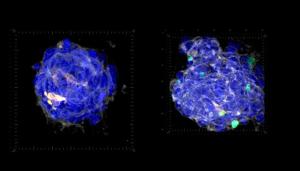
Lawrence Livermore National Laboratory (LLNL) scientists exploring the interaction between cancer cells and the extracellular matrix (ECM) — the “scaffolding” of organs — found that proteins in the ECM can dramatically impact the immune system’s ability to kill tumors. Researchers said the findings, published online in the journal Biomaterials, could represent a novel approach to studying immunosuppression found in many breast cancers and open new pathways of activating the immune system to target cancer.
In the paper, LLNL engineers and biologists report on the development of an assay for testing the efficacy of T cells — the white blood cells that in healthy persons surveil and eliminate precancerous cells. But in most breast cancers, these T cells fail to do their job.
The researchers cultured tumor and immune cells on various compositions of ECM (the molecules and proteins that make up the structural support system surrounding cells). By screening 25,000 cells on 36 different combinations of nine ECM proteins, the team demonstrated, for the first time, the ability of immune cells to clear tumors is regulated by the makeup of the ECM substrate.
“The surprising thing was finding the ability of the immune cell to kill a tumor depends on what [scaffolding proteins] the tumor is sitting on,” said LLNL mechanical engineer Claire Robertson, who led the work. “Depending on the ECM environment, the tumor cells were either completely susceptible and died off or they remained completely resistant to T cells.”
Most notably, the team found that in the presence of Collagen IV, breast cancer cells were more likely to grow and were more resistant to T cells, whereas T cells were more likely to die off. “The T cells that were touching Collagen IV were just not doing their job,” Robertson said. “In fact, we found that any time Collagen IV was in the mix, the T cells were dying instead of the tumor cells — exactly what you don't want to happen if you have a tumor.”
Researchers also discovered that in Collagen IV, T cells turned off gene signatures related to killing harmful cells, whereas tumor cells turned on signatures of cytokines that send messages to T cells that there is no tumor present.
Robertson said the experimental results provide clues as to why immune checkpoint therapies like Programmed death-ligand 1 (PD-L1) inhibitors, which have improved the prognosis of various cancers, have been largely ineffective in treating breast cancer. Breast cancers rarely express PD-L1 development as biomarkers, making patients ineligible for such therapies, she explained. Importantly, tumor cells cultured on Collagen IV turned PD-L1 off, but still showed profound immunosuppression, mimicking what happens in human breast tumors, Robertson added.
“The question is, what can we do to activate the immune system in these patients? The thing that's really exciting is the fact that we’ve found a completely unique mechanism of immunosuppression. It means we have a whole new way of targeting cancer,” she said.
Researchers said the pipeline they developed could apply beyond breast cancer to nearly any form of cancer.
“This research offers a new approach to identify and tease apart the critical components for understanding the biology of tumors, which may provide novel insight for more targeted cancer treatment,” said co-author Matt Coleman, a Translational Immunobiology group leader in the Lab’s Biosciences & Biotechnology Division.
LDRD Project Title: Engineered and Instrumented Three-Dimensional Tumor-Immune Model System
Principal Investigator:
Elizabeth Wheeler
LDRD Project:
19-SI-003
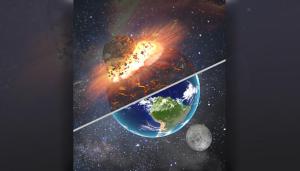
Earth’s supply of water is incredibly important for its ability to sustain life, but where did that water come from? Was it present when Earth formed or was it delivered later by meteorites or comets from outer space?
The source of Earth’s water has been a longstanding debate and Lawrence Livermore National Laboratory (LLNL) scientists think they have the answer — and they found it by looking at rocks from the moon.
Since the Earth-moon system formed together from the impact of two large bodies very early in solar system history, their histories are very much linked. And since the moon lacks plate tectonics and weathering, processes that tend to erase or obscure evidence on Earth, the moon is actually a great place to look for clues to the history of Earth’s water.
Even though close to 70 percent of Earth’s surface is covered with water, overall, the planet is a relatively dry place compared to many other objects in the solar system. And the moon is even drier. Conventional wisdom was that the lack of volatile species (such as water) on the Earth — and particularly the moon — was due to this violent impact that caused depletions in volatile elements.
But by looking at the isotopic makeup of lunar rocks, the team found that bodies involved in the impact that formed the Earth-moon system had very low levels of volatile elements prior to the impact, not because of it. Specifically, the team used the relative amount of the volatile and radioactive isotope rubidium-87 (87Rb), which is calculated from its daughter isotope strontium-87 (87Sr), to determine the budget of Rb in the Earth-moon system when it formed. The team found that because 87Sr, a proxy for the moon’s long-term volatile budget, was so low the bodies that collided must have both been dry to start with, and not much could have been added since.
“Earth was either born with the water we have, or we were hit by something that was basically pure H2O, with not much else in it. This work eliminates meteorites or asteroids as possible sources of water on Earth and points strongly toward the ‘born with it’ option,” said cosmochemist Greg Brennecka, a co-author of the paper.
In addition to greatly narrowing the potential source of Earth’s water, this work additionally reveals that the large bodies that collided must have both come from the inner Solar System, and the event could not have happened prior to 4.45 billion years ago, greatly reducing the formation window of the moon.
According to Lars Borg, the lead author of the study: “There were only a few types of materials that could have combined to make the Earth and moon, and they were not exotic — they were likely both just large bodies that formed in approximately the same area that happened to run into one another a little more than 100 million years after the solar system formed…but lucky for us, they did just that.”
LDRD Project Title: Addressing Unresolved Questions About the Solar System with New Lunar Samples from the Apollo Missions
Principal Investigator:
Gregory Brennecka
LDRD Project:
20-ERD-001
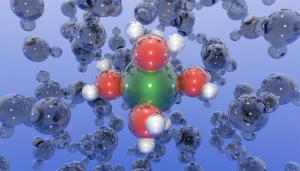
Most metal alloys are prone to corrosion, which costs hundreds of billions of dollars of damage annually in the U.S. alone. Accurately predicting corrosion rates is a long-standing goal of corrosion science, but these rates depend strongly on the specific operating environment. At the atomic scale, these environmental factors are associated with how quickly and easily metal ions dissolve and transport across solid-liquid interfaces.
Lawrence Livermore National Laboratory (LLNL) scientists have used molecular dynamics simulations to unveil and describe the dynamical behavior of dissolved metal ions and water — a key component of this corrosion puzzle. They introduced a new methodology to describe the strength and nature of chemical bonding between rapidly moving ions in solution. These ions are surrounded by closely held water molecules in the so-called hydration shell, which fluctuates dynamically in ways that can be analyzed computationally. The authors presented a recipe for how these fluctuations could be quantified to ultimately develop computational “descriptors” for the propensity of metals to dissolve in harsh environments. The research appears in in The Journal of Physical Chemistry Letters.
Beyond corrosion, fluctuations in the hydration shell dictate critical processes in interfacial phenomena relevant to a broad array of applications, including water desalination and crystallization, as well as electrochemical energy storage and conversion.
The team came up with three metrics to represent the dynamical softness of ion hydration shells in terms of their rigidity, deformability and fluidity.
“Our analysis showed that the new set of dynamic metrics not only correctly encoded key physical behavior, but also could explain trends in ion behavior that were challenging to classify using conventional static descriptors,” said LLNL materials scientist Stephen Weitzner.
Weitzner added that beyond aiding the description and discussion of ion transport kinetics, the metrics provide useful targets for the development of machine learning-based force fields that could dramatically accelerate future simulations of metal ion dissolution and transport rates without loss of accuracy.
LDRD Project Title: Predicting and Controlling Corrosion
Principal Investigator:
Brandon Wood
LDRD Project:
20-SI-004
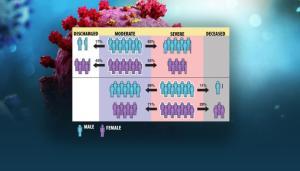
A Lawrence Livermore National Laboratory (LLNL) team has developed a comprehensive dynamic model of COVID-19 disease progression in hospitalized patients, finding that risk factors for complications from the disease are dependent on the patient’s disease state.
Using a machine learning algorithm on a dataset of electronic health records (EHRs) from more than 1,300 hospitalized COVID-19 patients with ProMedica — the largest health care system in northwestern Ohio and southeastern Michigan — the team classified patients into “moderate” or “severe” states and tracked disease trajectory as patients moved through different risk states during hospitalization.
Accounting for disease severity — in contrast to previous scientific literature examining only static risk factors — the method allowed the team to identify, as the disease progressed, when certain variables such as age and race, and comorbidities including diabetes and hypertension, led to more severe outcomes.
The model allowed the team, which included co-authors from the University of Toledo, to demonstrate for the first time that links between some factors and more adverse outcomes from COVID-19 can depend on the patient’s “current” condition. Most significantly, while male patients were found to be more likely than female patients to have serious complications or die from COVID-19, when starting from the “severe” disease state, women were more likely than men to die of the disease. The results were published in the Journal of the American Medical Informatics Association.
“It’s well known in the community that men are at a higher risk than women for eventual death from COVID, and that’s true — but certain counterintuitive behavior emerges once you break up the patient trajectory into disease states,” said LLNL principal investigator Priyadip Ray. “From the moderate disease state, men are more likely to transition to a more severe disease state. However, if you are in the severe disease state, surprisingly, women are more likely to die than men. This disease-state perspective has not been shown before and indicates that where you are in your disease also determines your risk factors.”
By modeling the entire trajectory of hospitalized COVID-19 patients, the team showed “statistically significant differences” in the relative risk of disease progression, which they concluded should be taken into consideration when performing risk assessment among patients in hospitals.
“The vast majority of studies on COVID-19 risk factors ignore the temporal progression of the disease in their analysis,” said LLNL co-author Braden Soper. “Our study provides a unique modeling-based approach to understanding how patient demographics and medical comorbidities can present different risk profiles depending on the underlying disease state. Such information is potentially more actionable throughout the course of care, possibly leading to better patient outcomes.”
Soper added that disease state-dependent risk assessment also can apply to many other acute and chronic diseases beyond COVID-19, which have thus far largely been assessed only with static data and modeling techniques.
Since EHRs typically suffer from irregularly sampled and/or missing data, the team used a statistical model known as a covariate-dependent, continuous-time hidden Markov model (HMM), known to handle such data well.
The models showed that, while being male, Black, or having a medical comorbidity were all associated with an increased risk of progressing from moderate to severe disease states, the same factors resulted in a decreased risk of transitioning from a severe state to death. Researchers attributed the counterintuitive results to the existing prevalence of static models for risk stratification.
“A fixed-time (static) model is susceptible to immortal time bias, as periods of follow-up may be incorrectly assigned to a particular disease state,” Ray said. “An HMM is less susceptible to such biases, as it can infer the disease state throughout the patient trajectory.”
Among the other findings: body mass index (BMI) alone was not linked to an increased risk of disease progression, while old age was associated with an increased risk in progressing from moderate to severe and from severe to deceased states, the researchers reported.
Tests on a budget
The LLNL/University of Toledo/ProMedica team’s work on dynamic models follows an earlier paper the team published in Scientific Reports, where they examined static risk factors for patients who go on to develop severe complications after testing positive for COVID‑19.
The team used an interpretability tool to find out which lab tests were most predictive for hospitalization or poor outcomes, identifying which tests should be collected in the case of budget constraints that could give clinicians nearly the same predictions for adverse outcomes as collecting all possible data.
“We tried to look at this problem in a different way,” Ray said. “We asked, ‘what if you have a budget constraint? What are the biomarkers that you can collect that will give you a good indication of how likely it is that this patient will need to be ventilated or likely to die due to the disease?’ “The interesting thing is that beyond a certain point, collecting more labs will not necessarily give better predictive performance. Can you select a small set of labs and markers that is indicative of risk?” Ray continued. “The answer we found was yes.”
To make that determination, the team created a cost structure, grouping types of lab tests and biomarkers with associated costs, from free information (demographics and comorbidities) and low-cost tests such as blood pressure and pulse oximetry, to more expensive lab results — such as liver function and inflammation.
The team then used a machine learning method known to work well for healthcare datasets with missing and/or skewed data to find correlations between patient's features and their risks for death or ventilation from COVID-19 and determine the most predictive set of features. Using the method, they found it was possible to achieve a 43 percent reduction in lab costs with only a 3 percent reduction in performance in predicting the likely need for ventilation from the disease.
LDRD Project Title: A Deep Bayesian Active Learning Framework for Temporal Multimodal Data
Principal Investigator:
Priyadip Ray
LDRD Project:
19-ERD-009
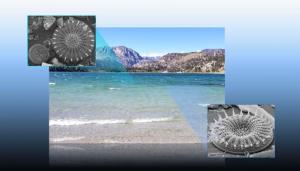
A Lawrence Livermore National Laboratory (LLNL) team has developed a comprehensive dynamic model of COVID-19 disease progression in hospitalized patients, finding that risk factors for complications from the disease are dependent on the patient’s disease state.
Using a machine learning algorithm on a dataset of electronic health records (EHRs) from more than 1,300 hospitalized COVID-19 patients with ProMedica — the largest health care system in northwestern Ohio and southeastern Michigan — the team classified patients into “moderate” or “severe” states and tracked disease trajectory as patients moved through different risk states during hospitalization.
Accounting for disease severity — in contrast to previous scientific literature examining only static risk factors — the method allowed the team to identify, as the disease progressed, when certain variables such as age and race, and comorbidities including diabetes and hypertension, led to more severe outcomes.
The model allowed the team, which included co-authors from the University of Toledo, to demonstrate for the first time that links between some factors and more adverse outcomes from COVID-19 can depend on the patient’s “current” condition. Most significantly, while male patients were found to be more likely than female patients to have serious complications or die from COVID-19, when starting from the “severe” disease state, women were more likely than men to die of the disease. The results were published in the Journal of the American Medical Informatics Association.
“It’s well known in the community that men are at a higher risk than women for eventual death from COVID, and that’s true — but certain counterintuitive behavior emerges once you break up the patient trajectory into disease states,” said LLNL principal investigator Priyadip Ray. “From the moderate disease state, men are more likely to transition to a more severe disease state. However, if you are in the severe disease state, surprisingly, women are more likely to die than men. This disease-state perspective has not been shown before and indicates that where you are in your disease also determines your risk factors.”
By modeling the entire trajectory of hospitalized COVID-19 patients, the team showed “statistically significant differences” in the relative risk of disease progression, which they concluded should be taken into consideration when performing risk assessment among patients in hospitals.
“The vast majority of studies on COVID-19 risk factors ignore the temporal progression of the disease in their analysis,” said LLNL co-author Braden Soper. “Our study provides a unique modeling-based approach to understanding how patient demographics and medical comorbidities can present different risk profiles depending on the underlying disease state. Such information is potentially more actionable throughout the course of care, possibly leading to better patient outcomes.”
Soper added that disease state-dependent risk assessment also can apply to many other acute and chronic diseases beyond COVID-19, which have thus far largely been assessed only with static data and modeling techniques.
Since EHRs typically suffer from irregularly sampled and/or missing data, the team used a statistical model known as a covariate-dependent, continuous-time hidden Markov model (HMM), known to handle such data well.
The models showed that, while being male, Black, or having a medical comorbidity were all associated with an increased risk of progressing from moderate to severe disease states, the same factors resulted in a decreased risk of transitioning from a severe state to death. Researchers attributed the counterintuitive results to the existing prevalence of static models for risk stratification.
“A fixed-time (static) model is susceptible to immortal time bias, as periods of follow-up may be incorrectly assigned to a particular disease state,” Ray said. “An HMM is less susceptible to such biases, as it can infer the disease state throughout the patient trajectory.” Among the other findings: body mass index (BMI) alone was not linked to an increased risk of disease progression, while old age was associated with an increased risk in progressing from moderate to severe and from severe to deceased states, the researchers reported.
Tests on a budget
The LLNL/University of Toledo/ProMedica team’s work on dynamic models follows an earlier paper the team published in Scientific Reports, where they examined static risk factors for patients who go on to develop severe complications after testing positive for COVID‑19.
The team used an interpretability tool to find out which lab tests were most predictive for hospitalization or poor outcomes, identifying which tests should be collected in the case of budget constraints that could give clinicians nearly the same predictions for adverse outcomes as collecting all possible data.
“We tried to look at this problem in a different way,” Ray said. “We asked, ‘what if you have a budget constraint? What are the biomarkers that you can collect that will give you a good indication of how likely it is that this patient will need to be ventilated or likely to die due to the disease?’ “The interesting thing is that beyond a certain point, collecting more labs will not necessarily give better predictive performance. Can you select a small set of labs and markers that is indicative of risk?” Ray continued. “The answer we found was yes.”
To make that determination, the team created a cost structure, grouping types of lab tests and biomarkers with associated costs, from free information (demographics and comorbidities) and low-cost tests such as blood pressure and pulse oximetry, to more expensive lab results — such as liver function and inflammation.
The team then used a machine learning method known to work well for healthcare datasets with missing and/or skewed data to find correlations between patient's features and their risks for death or ventilation from COVID-19 and determine the most predictive set of features. Using the method, they found it was possible to achieve a 43 percent reduction in lab costs with only a 3 percent reduction in performance in predicting the likely need for ventilation from the disease.
LDRD Project Title: Integrating Climate Simulations and Paleontology Data to Constrain California Drought Risks
Principal Investigator:
Ivana Cvijanovic
LDRD Project:
17-ERD-052
Scientific Leadership and Service
LDRD projects are distinguished by their mission-driven creativity. LDRD-funded research often launches stellar careers, initiates strategic collaborations, produces game-changing technical capabilities, and even lays the foundation for entirely new fields of science. It is no surprise that every year, LDRD principal investigators from LLNL are recognized for the groundbreaking results of a project or long-term contributions to their fields. The following examples highlight recognition received during fiscal year 2022, attesting to the exceptional talents of these researchers and underscoring the vitality of Livermore’s LDRD program.
Fellow
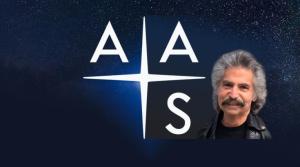
Richard Klein
Fellow, American Astronomical Society
LLNL physicist Richard Klein was selected for broad and influential contributions to computational astrophysics, for scientific achievements on radiatively-driven stellar winds and star formation theory and for training a generation of students and postdoctoral scholars.
“I am thrilled to get this award designation as a new fellow from the American Astronomical Society. I am deeply grateful to the many extraordinary collaborators, including senior researchers, my graduate students, and postdocs who I have worked with over the last several years both at LLNL and UC Berkeley.”
Other Awards
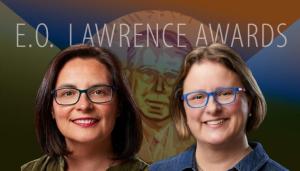
Sofia Quaglioni and Jennifer Pett-Ridge have been honored as E.O. Lawrence award recipients
Two Lawrence Livermore National Laboratory (LLNL) scientists are recipients of the prestigious 2021 E.O. Lawrence Award that recognizes mid-career U.S. scientists and engineers for exceptional scientific, technical and engineering achievements related to the broad missions of the Department of Energy (DOE) and its programs.
Jennifer Pett-Ridge was recognized for her research in biological and environmental sciences for pioneering work in quantitative microbial ecology and leadership in developing and applying isotopic tools that help us discover and quantify how changing climate shapes the roles of microorganisms and plants in environmental biogeochemical cycles.
“It feels really wonderful, and both humbling and validating to receive this award,” Pett-Ridge said. “I’ve spent most of my career working with, building up and leading research teams, and our research output speaks to what that collaborative, interdisciplinary approach can enable. I’m not a person with a singular breakthrough — instead I’ve worked on multiple systems, developed methods, and gained a rich appreciation for both fundamental and applied questions. It means so much to me that DOE and the review committee valued that kind of career path.”
Sofia Quaglioni was cited for her work in nuclear physics, specifically for seminal contributions unifying the theory of structure and reactions of light nuclei, providing predictive capability critical for understanding inertial fusion and nuclear astrophysics, as well as pioneering applications of quantum device simulations for nuclear dynamics.
“I am thankful to the DOE Office of Nuclear Physics for funding my research for the past 15 years, and to all the friends and colleagues who have supported and encouraged me,” Quaglioni said. “Most of all, I am thankful to my loving husband and two wonderful boys for their infinite patience and for always believing in me.”
The Lawrence Award was established to honor the memory of Ernest Orlando Lawrence, who invented the cyclotron — an accelerator of subatomic particles — and was named the 1939 Nobel Laureate in physics for that achievement. Lawrence later played a leading role in establishing the U.S. system of national laboratories, and today, the DOE’s national laboratories in Berkeley and Livermore bear his name.
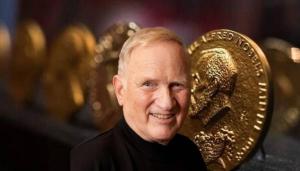
John Clauser, former Lab physicist, earns the 2022 Nobel Prize in Physics
John Clauser, an experimental physicist who spent a decade at Lawrence Livermore National Laboratory (LLNL), has been awarded the 2022 Nobel Prize in Physics, along with French scientist Alain Aspect and Austrian scientist Anton Zeilinger.
The Nobel Committee, made up of members from the Royal Swedish Academy of Sciences, cited the trio for “experiments with entangled photons, establishing the violation of Bell inequalities and pioneering quantum information science.”
“I’ve been up since 3 a.m. (when the Nobel Committee notified him) and I’m very happy,” he said from his home in Walnut Creek, California. “When I won the Wolf Prize, I thought there was a chance I could win the Nobel. But after a while, I stopped holding my breath…I’m just happy to be alive and make it through,” he quipped.
Clauser was born in Pasadena, California, and earned his bachelor’s degree in physics from the California Institute of Technology. He went on to earn his master’s and Ph.D. in physics from Columbia University. After a career at UC Berkeley, LBNL, LLNL and in the private sector, he now spends his time sailing and writing physics research papers.
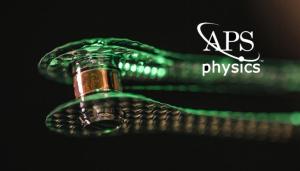
Burning Plasma Team receives honor from American Physical Society
The Burning Plasma Team has been awarded the 2022 John Dawson Award for Excellence in Plasma Physics Research by the American Physical Society. The team consists of members from Lawrence Livermore National Laboratory (LLNL) and from other institutions.
The team was cited “for the first laboratory demonstration of a burning deuterium-tritium plasma where alpha heating dominates the plasma energetics.”
“This honor recognizes the hard work and dedication conducted by the Burning Plasma Team in achieving and entering the burning plasma regime in a laboratory,” said Mark Herrmann, director for the Weapon Physics and Design Program within LLNL’s Weapons and Complex Integration Directorate.
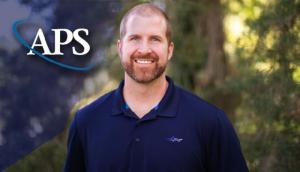
Richard Kraus honored for inaugural American Physical Society award
Lawrence Livermore National Laboratory (LLNL) research scientist Richard Kraus is the recipient of the inaugural American Physical Society’s 2023 Neil Ashcroft Early Career Award for Studies of Matter at Extreme High Pressure Conditions. Kraus is recognized for his outstanding theoretical or experimental contributions by an early-career scientist to studies of matter at extreme high-pressure conditions.
“To receive the inaugural Neil Ashcroft award is such an incredible honor. I hope that I can continue some of Neil’s legacy, pushing at the frontiers of our field while improving my ability to communicate the importance of what we do to a broader audience and the next generation of early-career scientists.”
Kraus received his Ph.D. in earth and planetary sciences and master’s in applied physics from Harvard University, and master’s and bachelor’s degrees in physics from the University of Cambridge and the University of Reno, respectively.
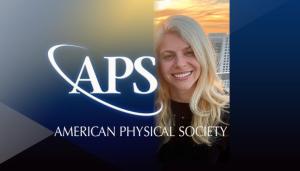
Lab scientist wins outstanding doctoral thesis award from American Physical Society
Lawrence Livermore National Laboratory (LLNL) scientist Alison Ruth Christopherson has earned the American Physical Society’s (APS) Marshall N. Rosenbluth Outstanding Doctoral Thesis award.
The award recognizes exceptional early-career scientists who have performed original thesis work of outstanding scientific quality and achievement in the area of plasma physics.
Christopherson was honored “for theories of fusion alpha heating and metrics to assess proximity to thermonuclear ignition in inertially confined plasmas, and for the development of a novel measurement of hot electron preheat and its spatial distribution in direct-drive laser fusion.”
“It is an honor to receive an award named after the extraordinary scientist Marshall Rosenbluth, whose brilliance laid the foundations for multiple fields within plasma physics,” Christopherson said. “He set the bar impossibly high for the rest of us.”
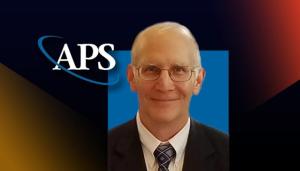
Bruce Remington honored with American Physical Society award
Bruce Remington, a distinguished member of the technical staff at Lawrence Livermore National Laboratory (LLNL), has been honored with the American Physical Society’s (APS) 2023 George E. Duvall Shock Compression Science Award, which recognizes contributions to understanding condensed matter and non-linear physics through shock compression. Remington was specifically honored “for pioneering laser-driven high-pressure, solid-state material dynamics in high-energy density regimes.”
“This award suggests to me that our high-energy-density science (HEDS) focus area has matured to the level that it is accepted and now highlighted for recognition by the broader shock physics community. This is a rewarding milestone for our HEDS community,” Remington said.
Remington received his bachelor’s degree from Northern Michigan University in 1975 and his Ph.D. in nuclear physics from Michigan State University in 1986. He did a two-year postdoctoral appointment in nuclear physics at LLNL, then joined the Laser Program (now the National Ignition Facility [NIF] and Photon Science Directorate) at LLNL in 1988. Since 1988, he has been a staff physicist in the Inertial Confinement Fusion (ICF) Program followed by the High Energy Density Science Program. He has been the NIF Discovery Science Program leader since 2014. He is best known for his work in HED laboratory astrophysics, where he founded the High Energy Density Laboratory Astrophysics conference series in 1996 to foster this new science focus area.
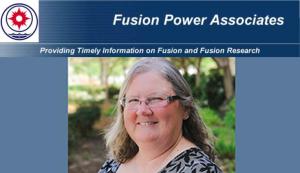
LLNL physicist Debbie Callahan receives fusion leadership award
The Fusion Power Associates (FPA) Board of Directors has selected Lawrence Livermore National Laboratory (LLNL) physicist Debbie Callahan as a recipient of its 2022 Leadership Award.
Callahan received the award at the Fusion Power Associates 43rd Annual Meeting and Symposium, in Washington, D.C. FPA leadership awards have been given annually since 1980 to recognize persons who have shown outstanding leadership qualities in accelerating the development of fusion as a commercial power source.
“I’m honored to have been selected for this award and be in the company of other great leaders in fusion — both at LLNL and around the world," Callahan said. “I’ve spent my career in fusion — first in inertial fusion energy and then moving to working towards ignition on NIF. It’s been an incredible journey of interesting science and technology and I’ve gotten to work with a great team of people in ICF and NIF.”
Callahan joined LLNL in 1987 as a graduate student in the Department of Applied Science, UC Davis. She received her Ph.D. in 1993 and was hired into X Division as a postdoc working on inertial fusion energy. She has spent her career working on inertial fusion energy (IFE) and inertial confinement fusion (ICF). She has authored or co-authored more than 200 refereed journal publications.
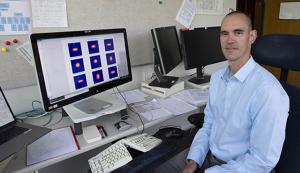
LLNL researchers win HPCwire award for applying cognitive simulation to inertial confinement fusion
The high performance computing publication HPCwire announced Lawrence Livermore National Laboratory (LLNL) as the winner of its Editor’s Choice award for Best Use of HPC in Energy for applying cognitive simulation (CogSim) methods to inertial confinement fusion (ICF) research.
Members of the CogSim team include LLNL researchers Brian Spears, Timo Bremer, Luc Peterson, Kelli Humbird, Rushil Anirudh, Brian Van Essen.
The award recognizes the team for progress in their machine learning-based approach to modeling ICF experiments performed at the National Ignition Facility (NIF) and elsewhere, which has led to the creation of faster and more accurate models of ICF implosions.
Spears said. “I’m particularly grateful to the wonderful team that we have used to build the tools and techniques over the years. What’s most exciting to me and the rest of the team is that we’ve worked very hard to build AI into a tool that can bridge high-performance computing and experimental work and put that together into something that’s actually functional for science."
“It’s really a large thrust from many different projects all working together — energy, fusion, CogSim — so it’s really awesome to see people from physics to computer science workflows all working together to get this done,” Bremer said. “And then to have this recognized is really a great honor.”
Added Van Essen: “The ability to work with this multidisciplinary team to develop these novel models and methods for scaling the training of deep neural networks for strategically important science is an absolute blast and a highlight of working at the national laboratories.”
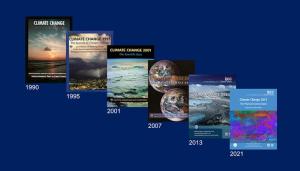
2022 Gulbenkian Prize for Humanity jointly awarded to the IPCC
The United Nations (UN) Intergovernmental Panel on Climate Change (IPCC) was jointly awarded the Gulbenkian Prize for Humanity, alongside the Intergovernmental Science-Policy Platform on Biodiversity and Ecosystem Services (IPBES). The prize jury distinguished the two intergovernmental organizations for their role in developing scientific knowledge, alerting society, and informing policymakers to improve decision-making to combat the dual challenges of climate change and biodiversity loss.
LLNL climate scientists have contributed as invited authors to every one of the six IPCC Assessment Reports since the first (FAR) was released in 1990 through to the latest Sixth Assessment Report (AR6), released in August 2021, and shared the Nobel Peace Prize with Al Gore in 2007 for these roles. The reports have documented and anchored global climate knowledge, melding the latest in observation and climate-model-based science.
The Gulbenkian Prize for Humanity was launched by the Calouste Gulbenkian Foundation in 2020 with the objective of distinguishing those persons and global organizations whose work has greatly contributed to mitigating the impacts of climate change.
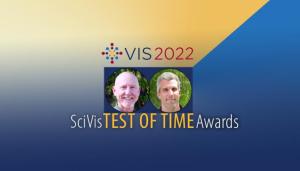
Two LLNL-led papers win Test of Time awards at 2022 IEEE VIS conference
Two Lawrence Livermore National Laboratory-led teams received SciVis Test of Time awards at the 2022 IEEE VIS conference for papers that have achieved lasting relevancy in the field of scientific visualization.
Published in 2008, an LLNL-led paper that — for the first time — allowed Digital Morse Theory to be applied to large scale and three-dimensional data, won the 14-year Test of Time award for making a lasting impact to the decades-long application of computational topology to data analysis and visualization at scale. LLNL co-authors included at the time were LLNL graduate research student Attila Gyulassy and computer scientists Peer-Timo Bremer and Valerio Pascucci.
LLNL’s Bremer said the paper was the culmination of work that began with “a fundamental mathematical theory and ended in eminently practical and scalable algorithms.”
The SciVis 25-year Test of Time award went to a paper co-authored by former LLNL senior scientist Mark Duchaineau and current LLNL computer scientist Mark Miller, who has helped develop numerous scientific database, visualization, and data modeling technologies at LLNL.
“Most of the ideas lived on,” Duchaineau said. “My colleagues and I were delighted to see how these ideas spread and were extended and adapted in so many ways.”
DOE Office of Science Early Career Research Program Award
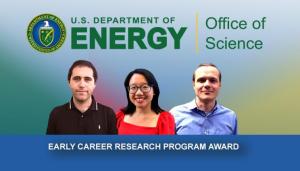
DOE honors three early-career Lab scientists
Three scientists from Lawrence Livermore National Laboratory (LLNL) are recipients of the Department of Energy’s (DOE) Office of Science Early Career Research Program award.
Mimi Yung, John Despotopulos and Timofey Frolov are among 83 awardees receiving the recognition. Under the program, typical awards for DOE national laboratory staff are $500,000 per year for five years.
Yung, a biochemist, was selected for her work in biological and environmental research, Despotopulos was selected for his research in nuclear physics, and Frolov was chosen for his work in fusion energy sciences.
“I feel incredibly grateful and truly honored to receive this award. It is a real highlight of my career thus far,” Yung said.
John Despotopulos was nominated for his work in the measurement of neutron-induced cross sections of nuclides, that has implications for national security and can improve our understanding of stellar nucleosynthesis.
“I’m shocked at receiving the award and excited to be able to perform this research,” he said.
Timothy Frolov is a physicist in the Materials Science Division and was nominated in the fusion energy sciences division for his work in grain boundary structure engineering of resilient tungsten alloys for fusion applications.
“I am excited about receiving this award and continuing my research,” Frolov said.
“Supporting America’s scientists and researchers early in their careers will ensure the U.S. remains at the forefront of scientific discovery and develops the solutions to our most pressing challenges,” said U.S. Secretary of Energy Jennifer M. Granholm. “The funding will allow the recipients the freedom to find the answers to some of the most complex questions as they establish themselves as experts in their fields.”
The Early Career Research Program, now in its 13th year, is designed to bolster the nation’s scientific workforce by providing support to exceptional researchers during crucial early-career years, when many scientists do their most formative work.








